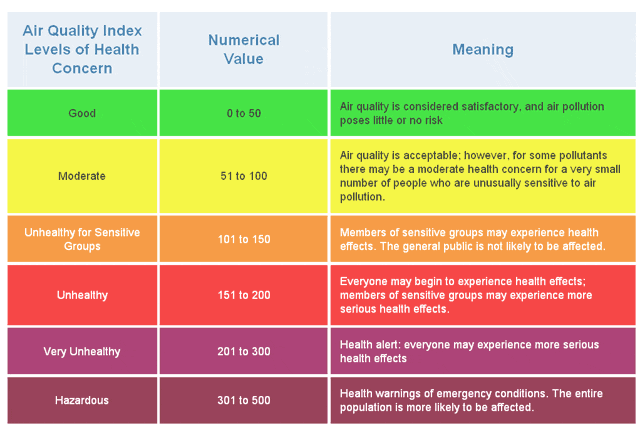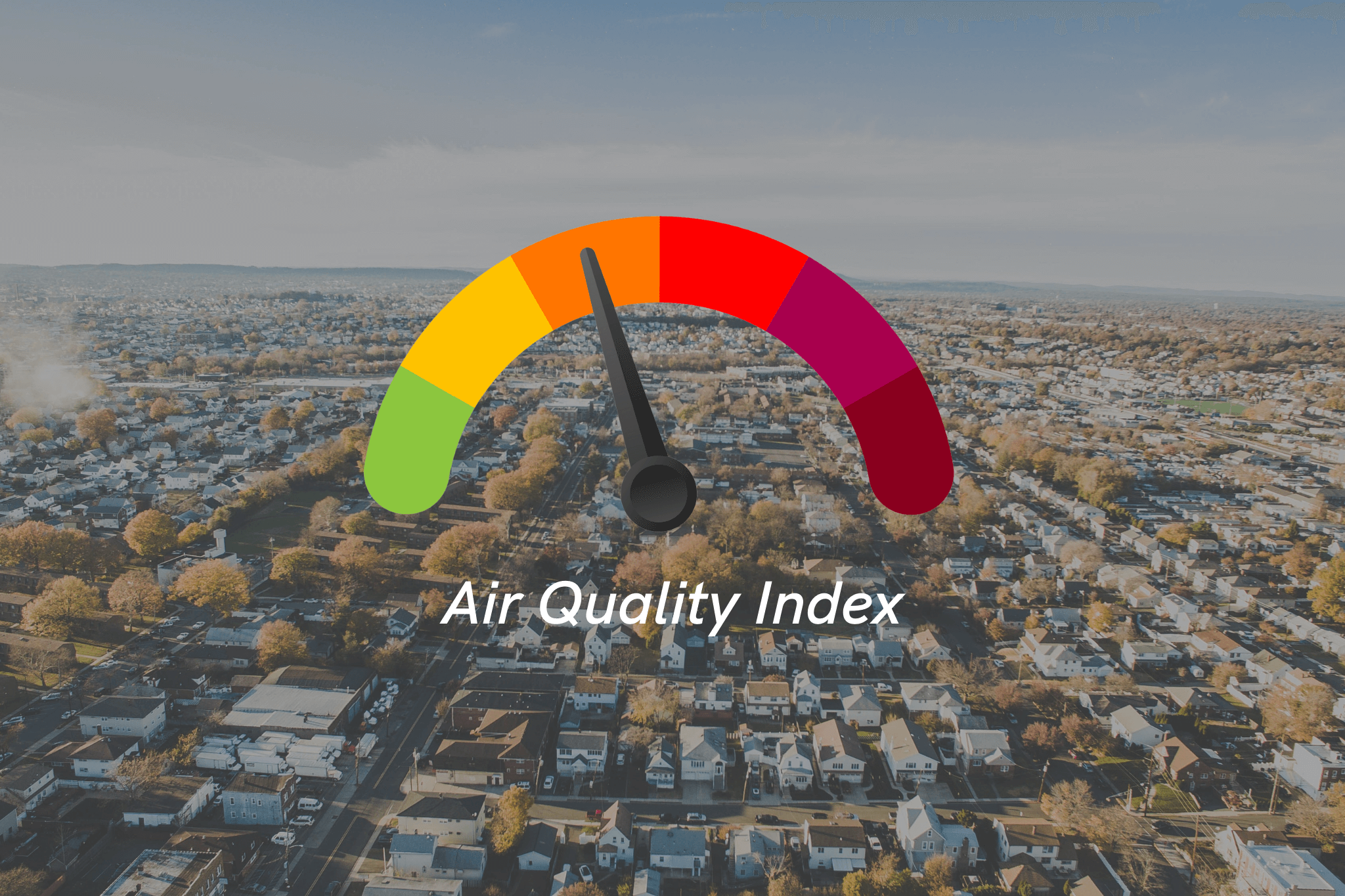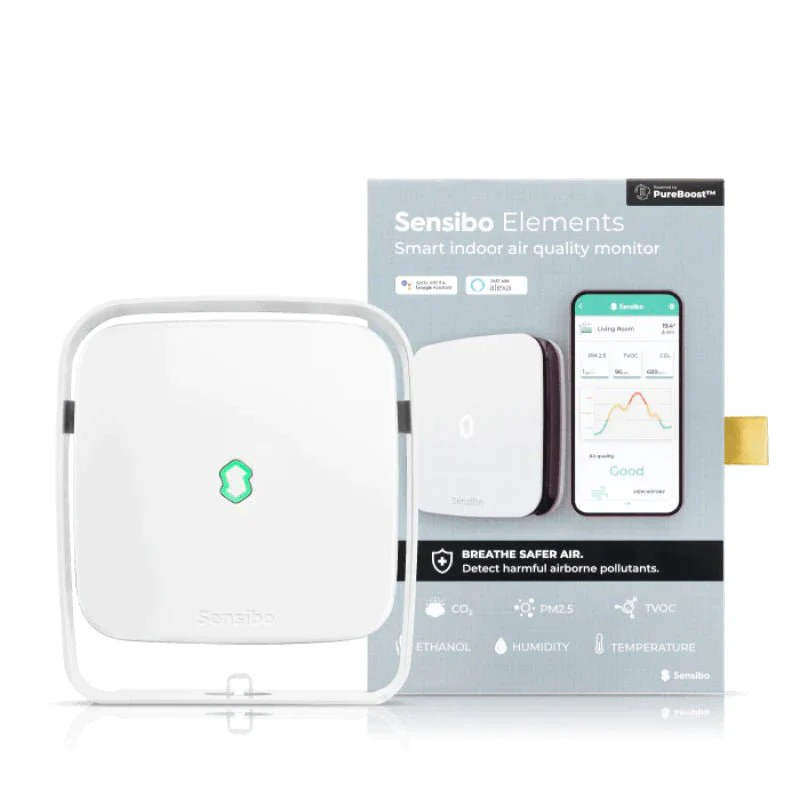Outdoor air quality affects your local environment, the air you breathe and how you live. Air quality awareness is simply being mindful of air quality. This easy awareness step helps better one’s understanding of the connection between environmental factors and health.
The easiest way to cultivate a greater air quality awareness, and specifically local air quality, is with the Air Quality Index (AQI). The AQI is a useful tool that measures and grades local air quality conditions. Not only does this provide useful information, but the index also helps explain how different levels of air quality can affect health.
According to AirNow, the agency that publically delivers AQI information, “air quality awareness includes education about the air in your specific area and what associated health effects might be a concern for your community.”
AQI Explained
The AQI index is used to communicate real-time air quality data to the public. The index is based on five major air pollutants that are regulated and monitored by the Environmental Protection Agency (EPA), in accordance with the Clean Air Act. Passed in 1970, this environmental law authorizes the EPA to set national standards for major air pollutants including ground-level ozone, particulate matter, carbon monoxide, sulfur dioxide and nitrogen dioxide.
 Criteria Air Pollutants: The five major air pollutants listed above, with the addition of lead, are also known as criteria air pollutants. Through the Clean Air Act, the EPA sets national standards for these six pervasive air pollutants known as National Ambient Air Quality Standards (NAAQS) and regulates emissions from stationary and mobile sources.
Criteria Air Pollutants: The five major air pollutants listed above, with the addition of lead, are also known as criteria air pollutants. Through the Clean Air Act, the EPA sets national standards for these six pervasive air pollutants known as National Ambient Air Quality Standards (NAAQS) and regulates emissions from stationary and mobile sources. The EPA, in partnership with local community organizations, actively monitors air quality across the nation. They measure and track pollutant concentration levels over time using local air quality sensors. These measurements are then converted into AQI values. From there, the highest AQI value reported for a single pollutant determines that day’s overall AQI.
TL;DR: The higher the air pollution concentration, the higher the AQI value. And, as the AQI level increases, so do the potential adverse health effects.
Air Quality Index Chart
The Air Quality Index looks something like this:

There are six distinct levels. Each level is assigned to a range of number values and associated with a specific color and health concern label.
What Are the Six Air Quality Index Levels?
Let’s break down each index level.
0–50: Green “Good”
This level is satisfactory and poses a minimal health risk.
51–100: Yellow “Moderate”
In comparison to “Good,” “Moderate” is considered acceptable air quality. This level can pose a health concern for certain vulnerable individuals. However, overall, AQI ratings below 100 are regarded as sufficient.
101–150: Orange “Unhealthy for Sensitive Groups”
In this range, those specific more vulnerable demographic groups face higher health risks and may experience adverse health effects. Several groups are considered more vulnerable to air pollution exposure. At this index level specifically, sensitive groups include those with lung disease or heart disease, children, elderly adults and outdoor laborers or those who regularly spend time being active outdoors.
151–200: Red “Unhealthy”
At this level, everyone can begin to experience symptoms related to air pollution exposure. Additionally, those sensitive groups can experience more serious adverse health effects.
201–300: Purple “Very Unhealthy”
At this level, all persons—regardless of preexisting conditions or vulnerable group status—can experience serious health effects. This level also triggers a health alert.
301–500: Maroon “Hazardous”
This index level takes it a step further than “Very Unhealthy” and triggers health warnings. Depending on the situation, this level of air pollution can also trigger an emergency condition status. This range means the entire population is at risk of serious adverse health effects.
What Is Normal AQI?
AQI values can differ season to season, day to day and even hour to hour. The “average” AQI will also differ depending on location and climate. However, regardless of the setting, the goal AQI for every area is in the 0–50 “Good” range.
Thanks to the Clean Air Act and greater pollution emission regulations, it’s rare for the AQI to exceed 300. The highest “Hazardous” level usually only occurs during wildfire events. Even “Unhealthy” and “Very Unhealthy” levels are typically infrequent occurrences.
While this is good news and exemplifies excellent air quality progress over the years, it should not be taken for granted. Simply because air quality measurements do not often hit the highest index levels does not absolve all concerns. Research continues to show that even short-term exposure to minimal levels of air pollution has significant health consequences. In reality, it’s necessary to consider air pollution exposure daily because there is no completely harmless, risk-free, acceptable level of air pollution exposure.
AQI Map
The Air Quality Index is a national index, meaning it is identical throughout the United States. Local and state agencies must use the same values, colors and labels for each level.
In larger communities, local agencies are required to report the AQI every day. Many smaller communities choose to report pollutant levels daily. There are, however, some rural regions of the country that are outside of monitoring areas and AQI ratings.
Curious about your city’s air quality? Check out AirNow’s interactive map that shows the current air quality conditions for the entire country!
How To Check Your Local AQI
Any weather app on your phone or tablet will include the day’s AQI. Local TV, radio and print news outlets also regularly report AQI values. Additionally, you can find local AQI information and upcoming AQI forecasts on the internet, by calling public telephone hotlines, downloading the AirNow AQI app or signing up for AirNow’s daily e-mail update.
Whichever method you choose, there are numerous ways to find daily air quality information and boost your air quality awareness!
Examples of real-time air quality ratings in Los Angeles, Kansas City and Philadelphia!
Using the Air Quality Index to Your Advantage
To use the AQI to your advantage, you should check your local AQI every day. Routinely checking the air quality builds your personal air quality awareness. Over time, understanding different air quality ratings implies changing behavior to account for poor air quality.
With this in mind, simply because the AQI is not green does not equate to canceling all of your plans and staying indoors. Real life rarely makes last-minute plan changes that simple. Plus, viewing the index as that stringent might make you less inclined to check it in the first place.
Instead, view the AQI solely as information. Consider it as truly cultivating a greater awareness of air quality. Make sure to take into account factors that could place you into a vulnerable group status. And remember, as your air quality awareness grows, it’ll become easier to discern when modifications are necessary or a change of plans is smart. Here are a few easy examples.
Examples
- Yellow or Higher AQI: Rather than letting your kids play outside for the entire afternoon, cut back on the amount of time as the air quality rating worsens. By limiting their time outdoors, you’re reducing their exposure. Fewer hours running around and breathing in higher pollution levels can make a difference!
- Orange AQI: You were planning on doing extensive yard work, but find the AQI is “Unhealthy for Sensitive Groups.” Rather than accomplishing everything on the list, choose the most pertinent and less physical tasks. Maybe opt for mowing the lawn and calling it quits rather than pulling every weed and replanting the flower beds that day.
- Orange or Higher AQI: A simple source control step is to close all windows and doors when outdoor air quality is poor. (An additional tip: if you have a whole-home mechanical ventilator, make sure your HVAC fan is on at all times to continuously circulate fresh filtered air indoors.)
- Yellow or Higher AQI: Someone in your household has asthma or a respiratory condition that makes them more sensitive to air pollutants. Consider leaving the HVAC fan on to ensure that indoor air is consistently circulating through the filter and reducing pollutants already indoors, as well as those entering from outside.
Air quality awareness does not have to be restrictive. The occasional behavior or action plan due to your new habit of checking AQI is well worth the health and wellness benefits of less air pollution exposure!
Why Is It Important To Be Aware of Your Local AQI?
A study found that AQI awareness increases with the number of poor air quality days. When poor air quality days are obvious, we’re more likely to choose to pay attention to or seek out air quality information. It makes sense that air quality would influence air quality awareness. However, knowing your local AQI should extend beyond the days when air quality is an apparent concern.
Air pollution exposure, indoors and out, has significant health consequences. In fact, there’s not a major organ system in the body not affected by air pollution!
Action comes from awareness. Limiting outdoor activities to minimize exposure or intervening in your home to improve indoor air quality are easy courses of action! Improving your and your family’s health, wellness and comfort can be as simple as AQI awareness.





